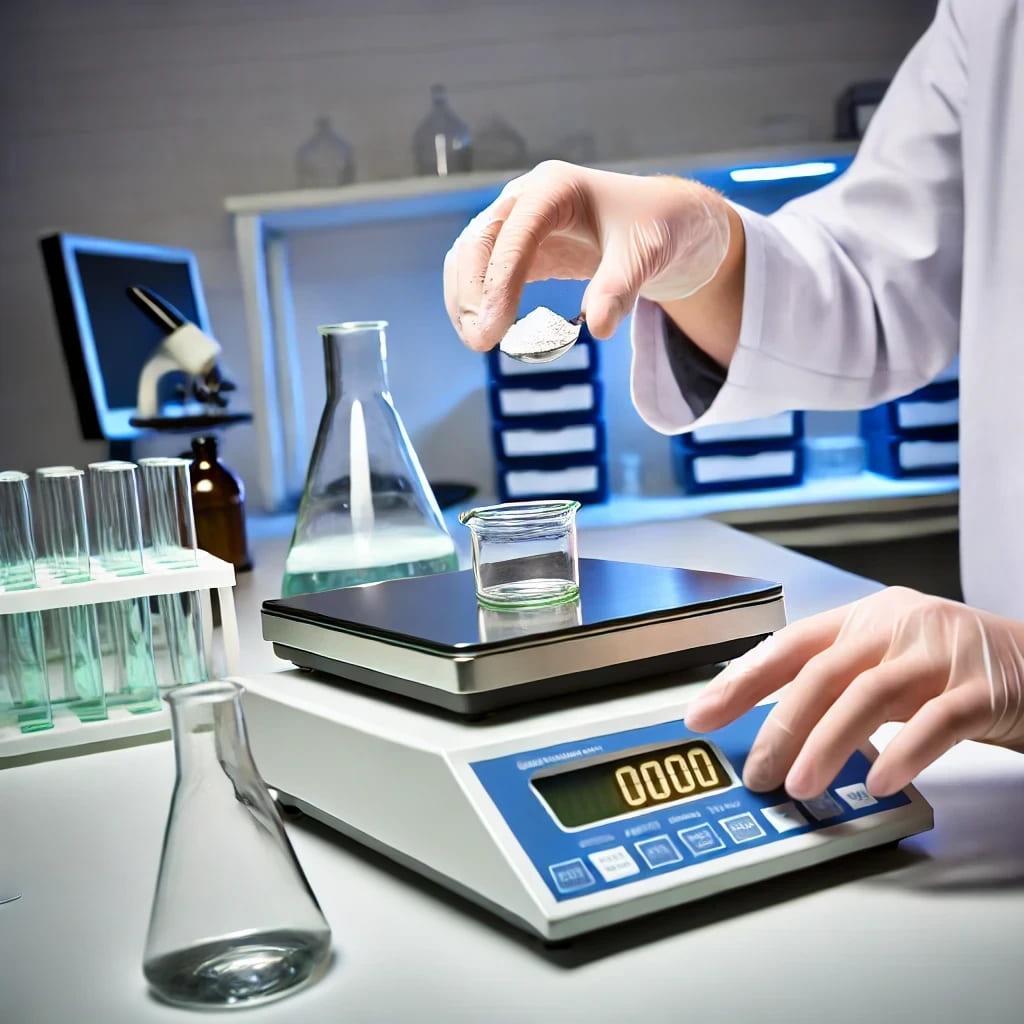Volumetric dosing is a method chemists and researchers use to accurately measure small amounts of substances, especially when a precise dose is required but direct measurement is challenging due to the substance’s potency. The process involves dissolving a known amount of substance in a solvent to create a solution with a known concentration. From there, doses can be measured based on volume, ensuring precision and safety.
Why Use Volumetric Dosing?
- Accurate Measurement: For substances like research chemicals, it’s often difficult to measure small milligram doses with precision using scales. Volumetric dosing provides a more practical and accurate method.
- Safety: This method significantly reduces the risk of overdose by ensuring the user takes a calculated, consistent dose every time.
- Consistency: Once the solution is made, it can be stored and used multiple times, making it more convenient for regular measurements.
How Does it Work?
- Substance Measurement: Start by measuring a known amount of the substance (e.g., 100mg).
- Dissolution: Dissolve the substance into a solvent (e.g., 10mL of distilled water or alcohol). The concentration is now 10mg/mL.
- Dose Calculation: To take a 2mg dose, you can extract 0.2mL of the solution, ensuring accurate dosing.
Safety Tips
- Use a precise scale for the initial substance measurement.
- Ensure the solvent is compatible with the substance (e.g., alcohol for some chemicals).
- Store the solution in a safe, labeled container to avoid confusion.
By following this method, researchers and chemists can maintain consistent, precise doses, minimizing risk and ensuring proper experimental results.
To help you accurately measure doses and concentrations of research chemicals, we’ve created a Volumetric Dosing Calculator. This tool simplifies the process of determining the exact solvent needed for your desired concentration, the resulting concentration of your solution, and how much solution to take for a specific dose. By entering the substance weight, solvent volume, or desired concentration, you can calculate each aspect effortlessly, ensuring precision and safety. You can try it out below to enhance your dosing accuracy!
Volumetric Dosing Calculator
This calculator helps you determine the correct amount of solution to take based on your input substance and desired dose.
Results:



Greetings from Ohio! I’m bored at work so I decided to check out your site on my iphone during lunch break. I really like the knowledge you provide here and can’t wait to take a look when I get home. I’m surprised at how fast your blog loaded on my cell phone .. I’m not even using WIFI, just 3G .. Anyways, wonderful site!
Glad to hear the site kept you entertained during your break. I appreciate your kind words and happy to know it loads quickly even on 3G! Hope you enjoy exploring more when you get home—thanks for stopping by!
what are the best solvents ?
where to find which is good for different chems ?
The best solvent for a specific chemical depends on its solubility characteristics, functional groups, and the intended application. Solubility tables and compatibility charts are excellent resources for identifying suitable solvents for different chemicals.
Factors to Consider When Choosing a Solvent
Polarity:
Polar Solvents (e.g., water, methanol, ethanol) dissolve polar or ionic substances.
Non-polar Solvents (e.g., hexane, toluene) dissolve non-polar substances like oils and fats.
Intermediate Polarity (e.g., ethyl acetate, acetone) work well for many organic compounds.
Hydrogen Bonding Ability:
Determines the ability of the solvent to interact with hydrogen donors/acceptors in the chemical structure.
Boiling Point:
Low boiling point solvents (e.g., diethyl ether) are easy to evaporate, making them ideal for quick drying.
High boiling point solvents (e.g., dimethyl sulfoxide [DMSO]) are used for reactions at higher temperatures.
Reactivity:
Some solvents, like acetone or water, may participate in chemical reactions, while others like hexane are inert.
Toxicity and Environmental Impact:
Choose less toxic and more sustainable options whenever possible (e.g., ethanol over chloroform).
Common Solvents and Their Applications
Water: Universal solvent for polar compounds and ionic species.
Ethanol: Miscible with water, excellent for polar and moderately polar compounds.
Acetone: Good for ketones, aldehydes, and moderately polar organic substances.
Chloroform: Effective for alkaloids and hydrophobic organic compounds.
DMSO: Dissolves polar and some nonpolar substances; widely used in biological applications.
Hexane: Common for nonpolar organic compounds like lipids.
Toluene: Dissolves aromatic hydrocarbons and nonpolar substances.
Methanol: Polar solvent ideal for polar organic and inorganic compounds.
Resources for Solvent Selection
Solubility Tables & Guides:
These are available in chemistry textbooks, online databases, and publications like the “CRC Handbook of Chemistry and Physics.”
Scientific Literature:
Research articles often specify the best solvents used for specific compounds or reactions.
Databases:
ChemSpider or PubChem: Provide solubility information.
Sigma-Aldrich: Has solvent compatibility and selection guides.
Manufacturers’ Recommendations:
Chemical suppliers like Sigma-Aldrich, Fisher Scientific, and TCI often provide guidance on solvent selection.
If you’re working with a specific chemical, let me know, and I can help you identify a suitable solvent.
This is the right blog for anyone who wants to find out about this topic. You realize so much its almost hard to argue with you (not that I actually would want…HaHa). You definitely put a new spin on a topic thats been written about for years. Great stuff, just great!
Thank you so much! I really appreciate your thoughtful comment. Volumetric dosing is such an important topic, and I’m glad you found the post informative and with a fresh perspective. HaHa—no arguments needed, just great discussions! Hope to see you around for more!
Díky moc!|Hej, jeg synes, dette er en fremragende blog. Jeg snublede over det;
Thank you so much! I really appreciate your kind words. I’m glad you found the blog and enjoyed it. Hope to see you back for more!
fantastic submit, very informative. I wonder why the opposite specialists of this sector don’t understand this. You must proceed your writing. I’m confident, you have a great readers’ base already!
Thank you so much for your kind words! I truly appreciate your support and encouragement. It’s always great to know the content is informative and valuable. I’ll definitely keep writing—hope to see you back for more!
Super-Duper website! I am loving it!! Will be back later to read some more. I am bookmarking your feeds also.
Thank you so much! I’m really glad you’re enjoying the content. Looking forward to having you back for more—stay tuned for new posts! And thanks for bookmarking, that means a lot!